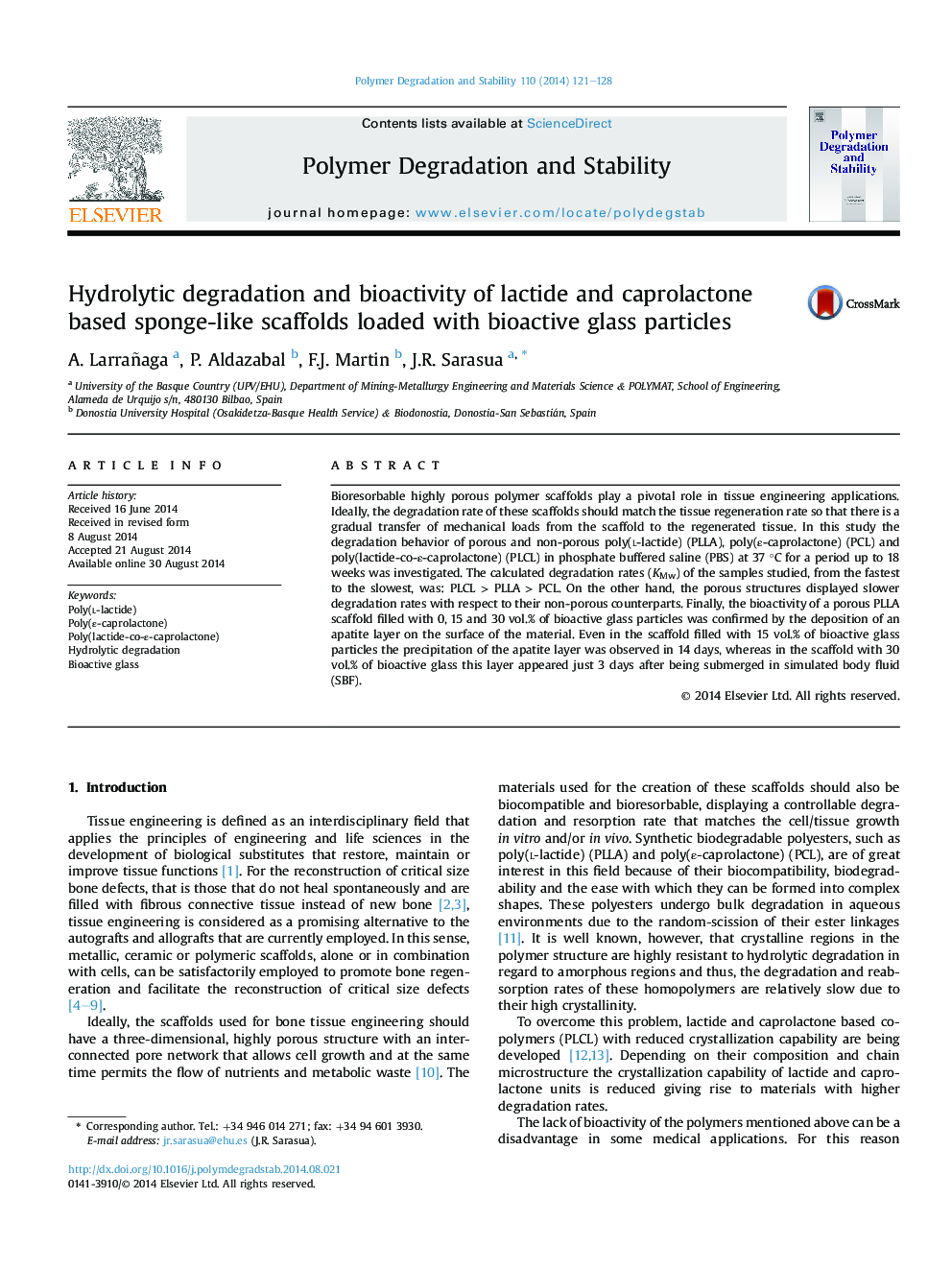| کد مقاله | کد نشریه | سال انتشار | مقاله انگلیسی | نسخه تمام متن |
|---|---|---|---|---|
| 5201643 | 1502903 | 2014 | 8 صفحه PDF | دانلود رایگان |
Bioresorbable highly porous polymer scaffolds play a pivotal role in tissue engineering applications. Ideally, the degradation rate of these scaffolds should match the tissue regeneration rate so that there is a gradual transfer of mechanical loads from the scaffold to the regenerated tissue. In this study the degradation behavior of porous and non-porous poly(l-lactide) (PLLA), poly(ε-caprolactone) (PCL) and poly(lactide-co-ε-caprolactone) (PLCL) in phosphate buffered saline (PBS) at 37 °C for a period up to 18 weeks was investigated. The calculated degradation rates (KMw) of the samples studied, from the fastest to the slowest, was: PLCL > PLLA > PCL. On the other hand, the porous structures displayed slower degradation rates with respect to their non-porous counterparts. Finally, the bioactivity of a porous PLLA scaffold filled with 0, 15 and 30 vol.% of bioactive glass particles was confirmed by the deposition of an apatite layer on the surface of the material. Even in the scaffold filled with 15 vol.% of bioactive glass particles the precipitation of the apatite layer was observed in 14 days, whereas in the scaffold with 30 vol.% of bioactive glass this layer appeared just 3 days after being submerged in simulated body fluid (SBF).
Journal: Polymer Degradation and Stability - Volume 110, December 2014, Pages 121-128
